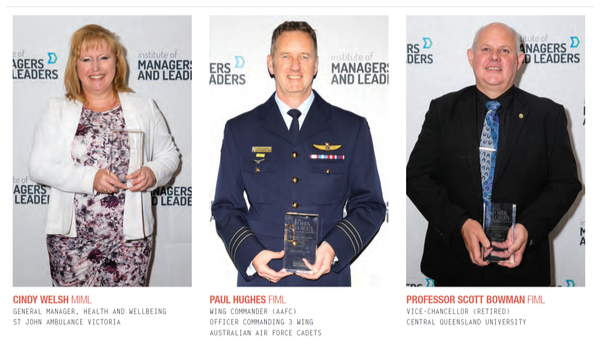By Sam Bell FIML
Many leaders struggle to inspire others. Yet, according to a survey conducted by Bain Research, employees are more than twice as productive if they are ‘satisfied’ employees. This suggests leaders who can inspire might provide a powerful competitive edge for their organisations.
In a similar vein, Harvard Business School gathered data from the assessments of more than 50,000 leaders, and the ability to inspire stood out as one of the most important competencies. It was the single trait that created the highest levels of staff engagement, and it separated the best leaders from everyone else. Crucially, it was what most employees wanted to see in their leaders.
Underscoring the importance of inspirational leadership inside workplaces, Gallup identified in their State of the Global Workplace report that 51% of employees are unengaged in their work and 17% are actively disengaged. This means that, on average, only 32% of employees are actively engaged in the workplace. Ultimately, organisations cannot survive or perform well with statistics like these.
TWO TYPES OF INSPIRATIONAL LEADER
I believe inspirational leaders can be placed in two distinct categories. Firstly, there are leaders who inspire a diverse population of people whom they have never physically met. These are usually leaders in their field – sport, politics, military and business – whom people admire because of their vision, their struggle, their achievements or their failures. Perhaps the most highly acclaimed inspirational figure of recent times who falls into this category is Nelson Mandela. People admire his lifetime of struggle and leadership for his nation on becoming President. Whilst most of us never met the man, we felt inspired by his journey.
In the second category are the people you know and see every day who give you the inspiration to do better in your daily life. This category of inspiration is by far the most important in my opinion. These people might be your family, friends, colleagues and yes, your workplace managers and leaders. It’s these ‘everyday people’ who give you a vision to be better, to improve, and who provide a purpose in life. These leaders understand the shadow they cast over others and ensure that, within their shadow, people know where they are going and the role they are playing to get there.
Today’s workplace leaders in this second category often lack the playbook to inspire today’s workforce, which is increasingly made up of employees who expect more meaning and value from their workplace. Where today’s leaders have typically cut their teeth in the workplace of the 20th century, today’s employees are increasingly products of the 21st century! The critical question when solving this leadership dilemma is: how do today’s ‘everyday leaders’ inspire the people they lead?
SIX WAYS LEADERS CAN INSPIRE OTHERS
- Be passionate about the vision and mission. Sharing a vision and mission in a way that enables others to feel passionate is a useful starting point when inspiring staff. The vision and the mission provide essential anchors for empowering others to feel that their work has a purpose and meaning beyond everyday tasks. When a leader communicates the big picture regularly it can assist in reinforcing why the organisation exists.
- Listen to your employees. People need to see their ideas being incorporated into the team and into the organisation and/or they need to understand the reasons they weren’t adopted. The ability to inspire others is not only about doing; it’s about listening and explaining.
- Make people feel included. Feeling inspired is about feeling connected to the actions and processes that lead to the achievement of the organisation’s goals or to the decisions made. When a leader includes people in the decision-making process they feel a sense of ownership of that decision.
- Demonstrate integrity. While vision and passion are important, employees must also trust a leader. Trust stems from seeing that a leader’s behaviour is aligned to what they say. They speak and live by their values and behave ethically. Leaders set the pace through expectations and example.
- Establish an environment of continuous improvement. This includes providing opportunities for employees to grow and develop, both personally and professionally, and can be achieved by setting goals and targets, allowing for secondments to other parts of the business, establishing special projects or encouraging further study.
- Recognise achievement. While financial reward is undoubtedly a significant motivator, recognition plays a vital role in making employees feel important and appreciated. Indeed, research has shown that a key source of inspiration for employees is speaking directly to them about the value of their work to the organisation.
It’s vital for workplace leaders to remember the influence they have over others. Take action to become an inspirational leader. Someone is always watching.

This is an edited extract from IML ANZ’s latest book, Leading Well: 7 attributes of very successful leaders (Major Street Publishing, A$34.95).
The book highlights seven attributes that ignite inspiring leadership. It focuses squarely on the personal attributes that can transform managers into leaders and good leaders into great leaders.
Order your copy here.
This article originally appeared in the September 2019 print edition of Leadership Matters, IML ANZ’s quarterly magazine. For editorial suggestions and enquiries, please contact karyl.estrella@managersandleaders.com.au.













